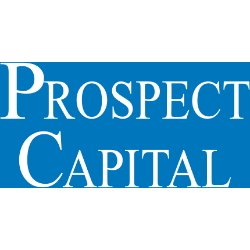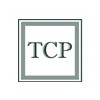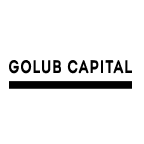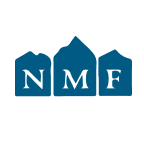HTGC

Hercules Capital, Inc.
HTGC
(2.2)20,19 USD
7.65% ROA
17.36% ROE
11.54x PER
3.275.103.750,00 USD
94.16% DER
9.52% Yield
63.28% NPM
Hercules Capital, Inc. Stock Analysis
Hercules Capital, Inc. Fundamental Analysis
Fundamental analysis in stock investing is like studying the foundation of a house before buying it. It involves looking at a company's financial health, like its earnings, assets, and debts, to determine if it's a good investment based on its fundamental strength and potential for growth.
| # | Analysis | Rating |
|---|---|---|
| 1 |
ROE
The stock's ROE exceeds expectations (20.86%), revealing strong profitability and efficient use of shareholders' equity, making it an attractive investment opportunity. |
|
| 2 |
Dividend
Investors can trust the company's impressive dividend track record, consistently distributing dividends over the past five years, showcasing a strong commitment to rewarding shareholders. |
|
| 3 |
ROA
The stock's ROA (9.46%) indicates that it's doing well in making money from the things it owns. This makes it a good option to invest and make consistent profits. |
|
| 4 |
PBV
The stock's PBV ratio (1.4x) indicates a justifiable valuation, presenting a compelling choice for investors seeking reasonable returns. |
|
| 5 |
Assets Growth
This company's revenue has shown remarkable growth over the past three years, making it an excellent choice for seeking a consistently prosperous investment. |
|
| 6 |
Graham Number
The company's Graham number indicates that it is undervalued compared to its stock price, suggesting a potentially favorable investment opportunity. |
|
| 7 |
Buffet Intrinsic Value
The company's stock shows potential as it is undervalued (25) according to Warren Buffett's formula, indicating that its intrinsic value exceeds the market price. |
|
| 8 |
DER
The stock is burdened with a heavy load of debt (101%), making it financially unstable and potentially risky for investors. |
|
| 9 |
Revenue Growth
Company has experienced no growth in revenue over the past three years, suggesting limited profitability and making it a less desirable investment opportunity. |
|
| 10 |
Net Profit Growth
The net profit of this company has shown no signs of growth over the last five years, suggesting limited profitability and making it a less attractive investment opportunity. |
|
| 11 |
Dividend Growth
Potential investors should be aware that the company's dividend growth has shown no upward trend in the past three years, indicating limited potential for increased returns. |
Hercules Capital, Inc. Technical Analysis
Technical analysis in stock investing is like reading the patterns on a weather map to predict future weather conditions. It involves studying past stock price movements and trading volumes to make predictions about where a stock's price might go next, without necessarily looking at the company's financial health.
| # | Analysis | Recommendation |
|---|---|---|
| 1 | Awesome Oscillator | Hold |
| 2 | MACD | Sell |
| 3 | RSI | Hold |
| 4 | Stoch RSI | Sell |
Hercules Capital, Inc. Price Chart
Financial Statements
Financial statements are like report cards for companies. They show how much money a company makes (income statement), what it owns and owes (balance sheet), and where it spends its money (cash flow statement), helping stock investors understand if a company is healthy and worth investing in.
Income Statements
An income statement for a company is like a scoreboard for its profits and losses. It shows how much money the company made (revenue) and how much it spent to make that money (expenses), helping stock investors see if a company is making a profit or not.
Revenue in stock investing is the total amount of money a company earns from its sales, and it's a key factor that investors consider to assess a company's financial performance and growth potential.
| Year | Revenue | Growth |
|---|---|---|
| 2004 | 0 | |
| 2005 | 9.700.894 | 100% |
| 2006 | 24.641.840 | 60.63% |
| 2007 | 59.539.000 | 58.61% |
| 2008 | 43.931.000 | -35.53% |
| 2009 | 35.358.000 | -24.25% |
| 2010 | 5.764.000 | -513.43% |
| 2011 | 66.603.000 | 91.35% |
| 2012 | 76.337.000 | 12.75% |
| 2013 | 135.760.000 | 43.77% |
| 2014 | 115.062.000 | -17.99% |
| 2015 | 95.713.000 | -20.22% |
| 2016 | 111.394.000 | 14.08% |
| 2017 | 135.577.000 | 17.84% |
| 2018 | 136.085.000 | 0.37% |
| 2019 | 243.604.000 | 44.14% |
| 2020 | 297.774.000 | 18.19% |
| 2021 | 255.135.000 | -16.71% |
| 2022 | 184.638.000 | -38.18% |
| 2023 | 205.956.000 | 10.35% |
| 2023 | 434.425.000 | 52.59% |
| 2024 | 476.888.000 | 8.9% |
Research and Development Expenses are the costs a company incurs to create and improve its products or services, which can be important for investors to evaluate a company's innovation and potential for future growth.
| Year | Research and Development Expenses | Growth |
|---|---|---|
| 2004 | 0 | |
| 2005 | 0 | 0% |
| 2006 | 0 | 0% |
| 2007 | 0 | 0% |
| 2008 | 0 | 0% |
| 2009 | 0 | 0% |
| 2010 | 0 | 0% |
| 2011 | 0 | 0% |
| 2012 | 0 | 0% |
| 2013 | 0 | 0% |
| 2014 | 0 | 0% |
| 2015 | 0 | 0% |
| 2016 | 0 | 0% |
| 2017 | 0 | 0% |
| 2018 | 0 | 0% |
| 2019 | 1 | 0% |
| 2020 | 1 | 0% |
| 2021 | 1 | 0% |
| 2022 | 0 | 0% |
| 2023 | 0 | 0% |
| 2023 | 0 | 0% |
| 2024 | 0 | 0% |
General and Administrative Expenses are the costs a company incurs to run its day-to-day operations, such as office rent, salaries, and utilities, which investors consider to understand a company's overall efficiency and management effectiveness.
| Year | General and Administrative Expenses | Growth |
|---|---|---|
| 2004 | 411.418 | |
| 2005 | 6.242.822 | 93.41% |
| 2006 | 5.408.785 | -15.42% |
| 2007 | 5.437.000 | 0.52% |
| 2008 | 6.899.000 | 21.19% |
| 2009 | 21.786.000 | 68.33% |
| 2010 | 21.528.000 | -1.2% |
| 2011 | 27.015.000 | 20.31% |
| 2012 | 8.108.000 | -233.19% |
| 2013 | 9.354.000 | 13.32% |
| 2014 | 10.209.000 | 8.37% |
| 2015 | 16.658.000 | 38.71% |
| 2016 | 16.106.000 | -3.43% |
| 2017 | 16.105.000 | -0.01% |
| 2018 | 15.488.000 | -3.98% |
| 2019 | 19.183.000 | 19.26% |
| 2020 | 18.910.000 | -1.44% |
| 2021 | 16.111.000 | -17.37% |
| 2022 | 16.948.000 | 4.94% |
| 2023 | 18.364.000 | 7.71% |
| 2023 | 18.696.000 | 1.78% |
| 2024 | 17.924.000 | -4.31% |
EBITDA stands for Earnings Before Interest, Taxes, Depreciation, and Amortization. It is a measure that helps stock investors analyze a company's profitability by looking at its earnings without considering certain expenses. This helps to get a clearer picture of the company's financial performance and its ability to generate cash flow.
| Year | EBITDA | Growth |
|---|---|---|
| 2004 | -2.034.288 | |
| 2005 | 0 | 0% |
| 2006 | 0 | 0% |
| 2007 | 32.695.000 | 100% |
| 2008 | 40.287.000 | 18.84% |
| 2009 | 0 | 0% |
| 2010 | 0 | 0% |
| 2011 | 42.677.000 | 100% |
| 2012 | 47.048.000 | 9.29% |
| 2013 | 0 | 0% |
| 2014 | 73.035.000 | 100% |
| 2015 | 43.110.000 | -69.42% |
| 2016 | 60.905.000 | 29.22% |
| 2017 | 79.199.000 | 23.1% |
| 2018 | 76.695.000 | -3.26% |
| 2019 | 205.208.000 | 62.63% |
| 2020 | 224.429.000 | 8.56% |
| 2021 | 213.389.000 | -5.17% |
| 2022 | 250.619.000 | 14.86% |
| 2023 | 112.104.000 | -123.56% |
| 2023 | 405.294.000 | 72.34% |
| 2024 | 244.440.000 | -65.81% |
Gross profit is the money a company makes from selling its products or services after subtracting the cost of producing or providing them, and it is an important measure for investors to understand a company's profitability.
| Year | Gross Profit | Growth |
|---|---|---|
| 2004 | 0 | |
| 2005 | -3.705.774.299.106 | 100% |
| 2006 | -5.778.837.358.160 | 35.87% |
| 2007 | 50.404.000 | 11465137.22% |
| 2008 | 32.336.000 | -55.88% |
| 2009 | 24.621.000 | -31.34% |
| 2010 | -4.710.000 | 622.74% |
| 2011 | 53.343.000 | 108.83% |
| 2012 | 63.011.000 | 15.34% |
| 2013 | 119.581.000 | 47.31% |
| 2014 | 98.458.000 | -21.45% |
| 2015 | 75.000.000 | -31.28% |
| 2016 | 88.894.000 | 15.63% |
| 2017 | 111.022.000 | 19.93% |
| 2018 | 111.023.000 | 0% |
| 2019 | 212.611.000 | 47.78% |
| 2020 | 268.778.000 | 20.9% |
| 2021 | 218.165.000 | -23.2% |
| 2022 | 140.786.000 | -54.96% |
| 2023 | 205.956.000 | 31.64% |
| 2023 | 384.167.000 | 46.39% |
| 2024 | 467.120.000 | 17.76% |
Net income in stock investing is like the money a company actually gets to keep as profit after paying all its bills, and it's an important measure to understand how well a company is doing financially.
| Year | Net Profit | Growth |
|---|---|---|
| 2004 | -2.041.822 | |
| 2005 | 2.104.565 | 197.02% |
| 2006 | 11.383.598 | 81.51% |
| 2007 | 42.409.000 | 73.16% |
| 2008 | 20.995.000 | -102% |
| 2009 | 13.572.000 | -54.69% |
| 2010 | 5.106.000 | -165.8% |
| 2011 | 46.936.000 | 89.12% |
| 2012 | 46.759.000 | -0.38% |
| 2013 | 99.446.000 | 52.98% |
| 2014 | 71.188.000 | -39.69% |
| 2015 | 42.916.000 | -65.88% |
| 2016 | 68.703.000 | 37.53% |
| 2017 | 78.998.000 | 13.03% |
| 2018 | 76.496.000 | -3.27% |
| 2019 | 173.598.000 | 55.93% |
| 2020 | 227.261.000 | 23.61% |
| 2021 | 174.155.000 | -30.49% |
| 2022 | 156.830.000 | -11.05% |
| 2023 | 111.868.000 | -40.19% |
| 2023 | 337.484.000 | 66.85% |
| 2024 | 167.408.000 | -101.59% |
EPS, or earnings per share, is a measure that shows how much profit a company has earned for each outstanding share of its stock, and it is important for stock investors as it helps understand the profitability of a company and compare it with other companies in the market.
| Year | Earning per Share (EPS) | Growth |
|---|---|---|
| 2004 | -2 | |
| 2005 | 0 | 0% |
| 2006 | 1 | 0% |
| 2007 | 2 | 100% |
| 2008 | 1 | 0% |
| 2009 | 0 | 0% |
| 2010 | 0 | 0% |
| 2011 | 1 | 100% |
| 2012 | 1 | 0% |
| 2013 | 2 | 100% |
| 2014 | 1 | 0% |
| 2015 | 1 | 0% |
| 2016 | 1 | 0% |
| 2017 | 1 | 0% |
| 2018 | 1 | 0% |
| 2019 | 2 | 100% |
| 2020 | 2 | 50% |
| 2021 | 2 | -100% |
| 2022 | 1 | 0% |
| 2023 | 1 | 0% |
| 2023 | 2 | 100% |
| 2024 | 1 | -100% |
Cashflow Statements
Cashflow statements show the movement of money in and out of a company, helping stock investors understand how much money a company makes and spends. By examining cashflow statements, investors can assess if a company is generating enough cash to pay its bills, invest in growth, and provide returns to stockholders.
Free cash flow is the leftover cash that a company generates after covering its operating expenses and capital expenditures, which is important for stock investors as it shows how much money a company has available to invest in growth, pay dividends, or reduce debt.
| Year | Free Cashflow | Growth |
|---|---|---|
| 2004 | -17.759.126 | |
| 2005 | -156.746.926 | 88.67% |
| 2006 | -92.068.618 | -70.25% |
| 2007 | -201.291.000 | 54.26% |
| 2008 | -28.133.000 | -615.5% |
| 2009 | 225.794.000 | 112.46% |
| 2010 | -93.494.000 | 341.51% |
| 2011 | -139.714.000 | 33.08% |
| 2012 | -194.022.000 | 27.99% |
| 2013 | 103.283.000 | 287.85% |
| 2014 | -26.721.000 | 486.52% |
| 2015 | -114.548.000 | 76.67% |
| 2016 | -138.637.000 | 17.38% |
| 2017 | -18.674.000 | -642.41% |
| 2018 | -249.445.000 | 92.51% |
| 2019 | -241.259.000 | -3.39% |
| 2020 | 207.665.000 | 216.18% |
| 2021 | 128.515.000 | -61.59% |
| 2022 | -424.913.000 | 130.25% |
| 2023 | 67.391.000 | 730.52% |
| 2023 | -115.376.000 | 158.41% |
| 2024 | 83.280.000 | 238.54% |
Operating cash flow represents the cash generated or consumed by a company's day-to-day operations, excluding external investing or financing activities, and is crucial for stock investors as it shows how much cash a company is generating from its core business operations.
| Year | Operating Cashflow | Growth |
|---|---|---|
| 2004 | -17.718.862 | |
| 2005 | -156.680.879 | 88.69% |
| 2006 | -91.251.612 | -71.7% |
| 2007 | -201.110.000 | 54.63% |
| 2008 | -27.527.000 | -630.59% |
| 2009 | 225.928.000 | 112.18% |
| 2010 | -93.250.000 | 342.28% |
| 2011 | -139.525.000 | 33.17% |
| 2012 | -193.935.000 | 28.06% |
| 2013 | 103.594.000 | 287.21% |
| 2014 | -26.531.000 | 490.46% |
| 2015 | -114.361.000 | 76.8% |
| 2016 | -138.385.000 | 17.36% |
| 2017 | -18.400.000 | -652.09% |
| 2018 | -248.970.000 | 92.61% |
| 2019 | -240.664.000 | -3.45% |
| 2020 | 207.802.000 | 215.81% |
| 2021 | 128.621.000 | -61.56% |
| 2022 | -424.799.000 | 130.28% |
| 2023 | 68.278.000 | 722.16% |
| 2023 | -115.365.000 | 159.18% |
| 2024 | 83.658.000 | 237.9% |
Capex, short for capital expenditures, refers to the money a company spends on acquiring or upgrading tangible assets like buildings, equipment, or technology, which is important for stock investors as it indicates how much a company is investing in its infrastructure to support future growth and profitability.
| Year | Capital Expenditure | Growth |
|---|---|---|
| 2004 | 40.264 | |
| 2005 | 66.047 | 39.04% |
| 2006 | 817.006 | 91.92% |
| 2007 | 181.000 | -351.38% |
| 2008 | 606.000 | 70.13% |
| 2009 | 134.000 | -352.24% |
| 2010 | 244.000 | 45.08% |
| 2011 | 189.000 | -29.1% |
| 2012 | 87.000 | -117.24% |
| 2013 | 311.000 | 72.03% |
| 2014 | 190.000 | -63.68% |
| 2015 | 187.000 | -1.6% |
| 2016 | 252.000 | 25.79% |
| 2017 | 274.000 | 8.03% |
| 2018 | 475.000 | 42.32% |
| 2019 | 595.000 | 20.17% |
| 2020 | 137.000 | -334.31% |
| 2021 | 106.000 | -29.25% |
| 2022 | 114.000 | 7.02% |
| 2023 | 887.000 | 87.15% |
| 2023 | 11.000 | -7963.64% |
| 2024 | 378.000 | 97.09% |
Balance Sheet
Balance sheets provide a snapshot of a company's financial health and its assets (such as cash, inventory, and property) and liabilities (like debts and obligations) at a specific point in time. For stock investors, balance sheets help assess the company's overall worth and evaluate its ability to meet financial obligations and support future growth.
Equity refers to the ownership interest or stake that shareholders have in a company, representing their claim on its assets and earnings after all debts and liabilities are paid.
| Year | Equity | Growth |
|---|---|---|
| 2004 | 25.078.133 | |
| 2005 | 114.352.330 | 78.07% |
| 2006 | 255.412.822 | 55.23% |
| 2007 | 400.737.000 | 36.26% |
| 2008 | 382.458.000 | -4.78% |
| 2009 | 366.515.000 | -4.35% |
| 2010 | 412.655.000 | 11.18% |
| 2011 | 431.041.000 | 4.27% |
| 2012 | 515.968.000 | 16.46% |
| 2013 | 650.007.000 | 20.62% |
| 2014 | 658.864.000 | 1.34% |
| 2015 | 717.134.000 | 8.13% |
| 2016 | 1.421.375.000 | 49.55% |
| 2017 | 1.532.824.000 | 7.27% |
| 2018 | 1.873.373.000 | 18.18% |
| 2019 | 2.316.666.000 | 19.13% |
| 2020 | 2.350.032.000 | 1.42% |
| 2021 | 2.415.967.000 | 2.73% |
| 2022 | 2.955.440.000 | 18.25% |
| 2023 | 3.246.757.000 | 8.97% |
| 2023 | 1.652.057.000 | -96.53% |
| 2024 | 1.856.545.000 | 11.01% |
Assets represent the valuable resources that a company owns, such as cash, inventory, property, and equipment, and understanding a company's assets helps investors assess its value and potential for generating future profits.
| Year | Assets | Growth |
|---|---|---|
| 2004 | 25.232.672 | |
| 2005 | 193.647.879 | 86.97% |
| 2006 | 301.142.209 | 35.7% |
| 2007 | 541.943.000 | 44.43% |
| 2008 | 608.672.000 | 10.96% |
| 2009 | 508.967.000 | -19.59% |
| 2010 | 591.371.000 | 13.93% |
| 2011 | 747.394.000 | 20.88% |
| 2012 | 1.123.643.000 | 33.48% |
| 2013 | 1.221.715.000 | 8.03% |
| 2014 | 1.299.223.000 | 5.97% |
| 2015 | 1.334.761.000 | 2.66% |
| 2016 | 1.464.204.000 | 8.84% |
| 2017 | 1.654.715.000 | 11.51% |
| 2018 | 1.945.191.000 | 14.93% |
| 2019 | 2.461.968.000 | 20.99% |
| 2020 | 2.623.997.000 | 6.17% |
| 2021 | 2.600.013.000 | -0.92% |
| 2022 | 3.028.855.000 | 14.16% |
| 2023 | 3.416.926.000 | 11.36% |
| 2023 | 3.336.402.000 | -2.41% |
| 2024 | 3.672.136.000 | 9.14% |
Liabilities refer to the financial obligations or debts that a company owes to creditors or external parties, and understanding a company's liabilities is important for investors as it helps assess the company's financial risk and ability to meet its obligations.
| Year | Liabilities | Growth |
|---|---|---|
| 2004 | 154.539 | |
| 2005 | 79.295.549 | 99.81% |
| 2006 | 45.729.387 | -73.4% |
| 2007 | 141.206.000 | 67.62% |
| 2008 | 226.214.000 | 37.58% |
| 2009 | 142.452.000 | -58.8% |
| 2010 | 178.716.000 | 20.29% |
| 2011 | 316.353.000 | 43.51% |
| 2012 | 607.675.000 | 47.94% |
| 2013 | 571.708.000 | -6.29% |
| 2014 | 640.359.000 | 10.72% |
| 2015 | 617.627.000 | -3.68% |
| 2016 | 676.260.000 | 8.67% |
| 2017 | 813.748.000 | 16.9% |
| 2018 | 989.747.000 | 17.78% |
| 2019 | 1.328.919.000 | 25.52% |
| 2020 | 1.332.293.000 | 0.25% |
| 2021 | 1.291.466.000 | -3.16% |
| 2022 | 1.627.396.000 | 20.64% |
| 2023 | 1.614.220.000 | -0.82% |
| 2023 | 1.684.345.000 | 4.16% |
| 2024 | 1.815.591.000 | 7.23% |
Hercules Capital, Inc. Financial Ratio (TTM)
Valuation Metrics
- Revenue per Share
- 2.74
- Net Income per Share
- 1.75
- Price to Earning Ratio
- 11.54x
- Price To Sales Ratio
- 7.45x
- POCF Ratio
- 19.77
- PFCF Ratio
- 20.11
- Price to Book Ratio
- 1.75
- EV to Sales
- 11.37
- EV Over EBITDA
- -57.92
- EV to Operating CashFlow
- 30.5
- EV to FreeCashFlow
- 30.72
- Earnings Yield
- 0.09
- FreeCashFlow Yield
- 0.05
- Market Cap
- 3,28 Bil.
- Enterprise Value
- 5,00 Bil.
- Graham Number
- 21.31
- Graham NetNet
- -10.91
Income Statement Metrics
- Net Income per Share
- 1.75
- Income Quality
- 0.59
- ROE
- 0.16
- Return On Assets
- 0.09
- Return On Capital Employed
- 0.09
- Net Income per EBT
- 1
- EBT Per Ebit
- 1.05
- Ebit per Revenue
- 0.61
- Effective Tax Rate
- -0.05
Margins
- Sales, General, & Administrative to Revenue
- 0.04
- Research & Developement to Revenue
- 0
- Stock Based Compensation to Revenue
- 0.02
- Gross Profit Margin
- 0.89
- Operating Profit Margin
- 0.61
- Pretax Profit Margin
- 0.63
- Net Profit Margin
- 0.63
Dividends
- Dividend Yield
- 0.1
- Dividend Yield %
- 9.52
- Payout Ratio
- 1.04
- Dividend Per Share
- 1.92
Operating Metrics
- Operating Cashflow per Share
- 1.02
- Free CashFlow per Share
- 1.01
- Capex to Operating CashFlow
- 0.01
- Capex to Revenue
- 0
- Capex to Depreciation
- 3.24
- Return on Invested Capital
- 0.08
- Return on Tangible Assets
- 0.08
- Days Sales Outstanding
- 26.17
- Days Payables Outstanding
- 401.43
- Days of Inventory on Hand
- 0
- Receivables Turnover
- 13.95
- Payables Turnover
- 0.91
- Inventory Turnover
- 0
- Capex per Share
- 0.01
Balance Sheet
- Cash per Share
- 0,24
- Book Value per Share
- 11,55
- Tangible Book Value per Share
- 11.55
- Shareholders Equity per Share
- 11.55
- Interest Debt per Share
- 11.31
- Debt to Equity
- 0.94
- Debt to Assets
- 0.48
- Net Debt to EBITDA
- -20
- Current Ratio
- 3.13
- Tangible Asset Value
- 1,86 Bil.
- Net Current Asset Value
- -1,76 Bil.
- Invested Capital
- 58368000
- Working Capital
- 0,04 Bil.
- Intangibles to Total Assets
- 0
- Average Receivables
- 0,03 Bil.
- Average Payables
- 0,04 Bil.
- Average Inventory
- 0.5
- Debt to Market Cap
- 0.53
Dividends
Dividends in stock investing are like rewards that companies give to their shareholders. They are a portion of the company's profits distributed to investors, typically in the form of cash payments, as a way for them to share in the company's success.
| Year | Dividends | Growth |
|---|---|---|
| 2005 | 0 | |
| 2006 | 1 | 100% |
| 2007 | 1 | 0% |
| 2008 | 1 | 0% |
| 2009 | 1 | 0% |
| 2010 | 1 | 0% |
| 2011 | 1 | 0% |
| 2012 | 1 | 0% |
| 2013 | 1 | 100% |
| 2014 | 1 | 0% |
| 2015 | 1 | 0% |
| 2016 | 1 | 0% |
| 2017 | 1 | 0% |
| 2018 | 1 | 0% |
| 2019 | 1 | 0% |
| 2020 | 1 | 0% |
| 2021 | 2 | 0% |
| 2022 | 2 | 50% |
| 2023 | 2 | -100% |
| 2024 | 1 | 0% |
Hercules Capital, Inc. Profile
About Hercules Capital, Inc.
Hercules Capital, Inc. is a business development company. The firm specializing in providing venture debt, debt, senior secured loans, and growth capital to privately held venture capital-backed companies at all stages of development from startups, to expansion stage including select publicly listed companies and select special opportunity lower middle market companies that require additional capital to fund acquisitions, recapitalizations and refinancing and established-stage companies. The firm provides growth capital financing solutions for capital extension; management buy-out and corporate spin-out financing solutions; company, asset specific, or intellectual property acquisition financing; convertible, subordinated and/or mezzanine loans; domestic and international corporate expansion; vendor financing; revenue acceleration by sales and marketing development, and manufacturing expansion. It provides asset-based financing with a focus on cash flow; accounts receivable facilities; equipment loans or leases; equipment acquisition; facilities build-out and/or expansion; working capital revolving lines of credit; inventory. The firm also provides bridge financing to IPO or mergers and acquisitions or technology acquisition; dividend recapitalizations and other sources of investor liquidity; cash flow financing to protect against share price volatility; competitor acquisition; pre-IPO financing for extra cash on the balance sheet; public company financing to continue asset growth and production capacity; short-term bridge financing; and strategic and intellectual property acquisition financings. It also focuses on customized financing solutions, emerging growth, mid venture, and late venture financing. The firm invests primarily in structured debt with warrants and, to a lesser extent, in senior debt and equity investments. The firm generally seeks to invest in companies that have been operating for at least six to 12 months prior to the date of their investment. It prefers to invest in technology, energy technology, sustainable and renewable technology, and life sciences. Within technology the firm focuses on advanced specialty materials and chemicals; communication and networking, consumer and business products; consumer products and services, digital media and consumer internet; electronics and computer hardware; enterprise software and services; gaming; healthcare services; information services; business services; media, content and information; mobile; resource management; security software; semiconductors; semiconductors and hardware; and software sector. Within energy technology, it invests in agriculture; clean technology; energy and renewable technology, fuels and power technology; geothermal; smart grid and energy efficiency and monitoring technologies; solar; and wind. Within life sciences, the firm invests in biopharmaceuticals; biotechnology tools; diagnostics; drug discovery, development and delivery; medical devices and equipment; surgical devices; therapeutics; pharma services; and specialty pharmaceuticals. It also invests in educational services. The firm invests primarily in United States based companies and considers investment in the West Coast, Mid-Atlantic regions, Southeast and Midwest; particularly in the areas of software, biotech and information services. The firm prefers to invest between $10 million to $250 million in equity per transactions. It invests generally between $1 million to $40 million in companies focused primarily on business services, communications, electronics, hardware, and healthcare services. The firm invests primarily in private companies but also have investments in public companies. For equity investments, the firm seeks to represent a controlling interest in its portfolio companies which may exceed 25% of the voting securities of such companies. The firm seeks to invest a limited portion of its assets in equipment-based loans to early-stage prospective portfolio companies. These loans are generally for amounts up to $3 million but may be up to $15 million for certain energy technology venture investments. The firm allows certain debt investments have the right to convert a portion of the debt investment into equity. It also co-invests with other private equity firms. The firm seeks to exit its investments through initial public offering, a private sale of equity interest to a third party, a merger or an acquisition of the company or a purchase of the equity position by the company or one of its stockholders. The firm has structured debt with warrants which typically have maturities of between two and seven years with an average of three years; senior debt with an investment horizon of less than three years; equipment loans with an investment horizon ranging from three to four years; and equity related securities with an investment horizon ranging from three to seven years. The firm prefers to invest through its balance sheet capital. The firm formerly known as Hercules Technology Growth Capital, Inc. Hercules Capital, Inc. was founded in December 2003 and is based in Palo Alto, California with additional offices in Connecticut; Boston, Massachusetts; San Diego, California; Westport, Connecticut; Elmhurst, Illinois; Santa Monica, California; McLean, Virginia; New York, New York; Radnor, Pennsylvania; and Washington, District of Columbia and London, United Kingdom.
- CEO
- Mr. Scott Bluestein
- Employee
- 100
- Address
-
400 Hamilton Avenue
Palo Alto, 94301
Hercules Capital, Inc. Executives & BODs
| # | Name | Age |
|---|---|---|
| 1 |
Mr. Michael W. Hara Managing Director of Investor Relations & Corporate Communications |
70 |
| 2 |
Ms. Kate Kinlin Vice President of Human Resources |
70 |
| 3 |
Mr. Scott Bluestein Chief Executive Officer, Chief Investment Officer, President & Director |
70 |
| 4 |
Mr. Seth Hardy Meyer Chief Financial Officer & Chief Accounting Officer |
70 |
| 5 |
Ms. Kiersten Zaza Botelho Corporate Secretary, Chief Legal & Compliance Officer |
70 |
| 6 |
Mr. Michael Bowden Managing Director of Portfolio Management |
70 |
| 7 |
Mr. R. Bryan Jadot Senior MD & Group Head of Life Sciences |
70 |
| 8 |
Mr. Roy Y. Liu Managing Director |
70 |
| 9 |
Mr. Christian Follmann Chief Operating Officer |
70 |
| 10 |
Mr. Steve Kuo Senior MD & Group Head of Technology |
70 |













